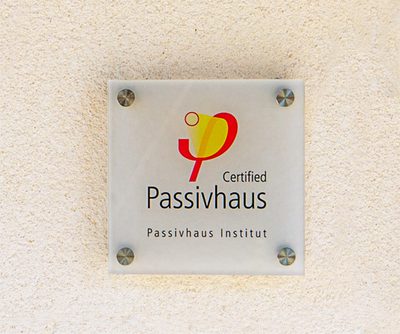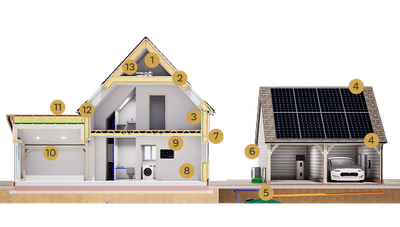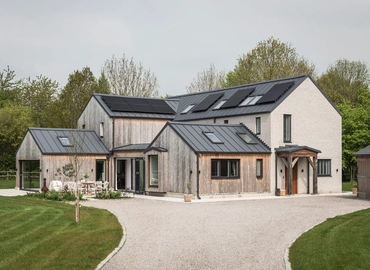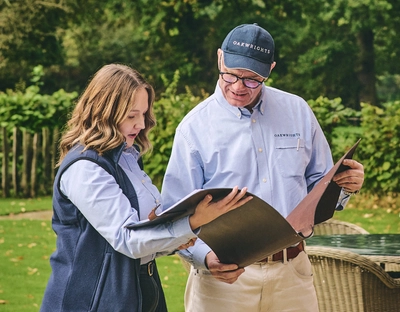
Passivhaus homes
Our approach to Passivhaus design ensures superior insulation, airtight construction, and meticulous craftsmanship to help reduce energy consumption.

What is Passivhaus?
Passivhaus is an ultra-energy-efficient building standard that has a < 0.6 ACH @50Pa compared to typical new builds which range from 3-5 ACH or higher. The standard utilises a fabric first approach to design, combined with high performance technologies to reduce energy consumption while maintaining an even temperature throughout the year and a healthy indoor environment.
Crafted with precision and care a Passivhaus isn't just a sustainable option it's a home that works with nature not against it. Requiring 90% less energy for heating and cooling compared to conventional buildings, a Passivhaus home will have lower energy bills and will stay warm in the winter and cool in the summer.
The Passivhaus home
Below is a diagram illustrating the core Passivhaus principles we incorporate into all our builds, including superior insulation, airtight construction, high performance windows, thermal bridge-free design, and energy efficient ventilation systems for optimal comfort and efficiency.



To meet Passivhaus standards, your airtightness score must be <0.6 ACH. This is achievable by pairing our WrightRoof Natural² and WrightWall Natural² panel systems with state-of-the-art-technologies like AeroBarrier and triple glazing.








While this isn’t a requirement, incorporating smart home integration systems, such as Baulogic, into a build can help increase energy efficiency by automating appliances and lighting based on usage patterns.


At around 368mm thick our WrightRoof Natural² panel is packed with STEICOzell insulation at a density of 45kg/m³.

At around 308mm thick our WrightWall Natural² panel is packed with STEICOzell insulation at a density of 45kg/m³.


MVHR

Airtightness

Thermal bridging

Solar PV cells and battery

Rainwater harvesting

Air source heat pump

High quality triple glazing

Passive foundations

Smart home integration

Indoor/<br>outdoor living

WrightRoof Natural²

WrightWall Natural²

Insulated capped ceilings

The benefits of Passivhaus homes









